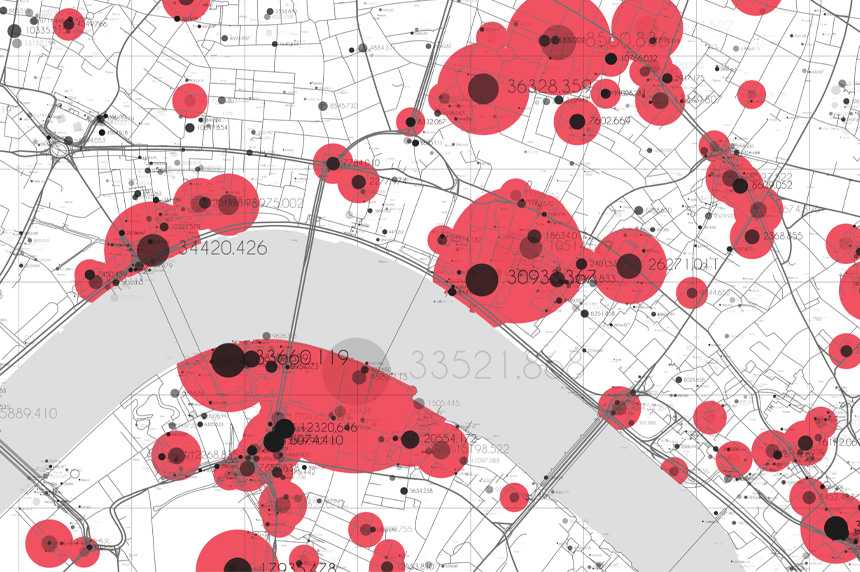Stay up to date with the latest OSINT news from around the world
This week in open-source intelligence (OSINT) news, publicly available data is speeding up the transmission of valuable intelligence from the ground in war zones, such as Ukraine. Russian soldiers are revealing their location through cell phone use, enabling the Ukrainian military to target Russian positions and a Ukrainian OSINT group has identified Russian military personnel responsible for a missile strike that killed dozens of civilians.
Domestically, experts worry the intelligence community is lagging behind adversaries on open-source collection, and that the all-time low public trust in media could create a national security issue.
This is the OSINT news of the week:
OSINT may clear the “the fog of war”
War reporting used to take days to weeks to transmit information. Now geo-located photos from soldiers are uploaded to Telegram, sometimes in real time. This presents a score of vulnerabilities to operational security, but also unprecedented opportunity to collect and analyze this data and get rapid feedback on military activities.
Despite the sheer amount of uploaded data revealing sensitive information of Russian troops, their whereabouts, their paths and actions, and impact of Ukrainian attack, British intelligence agencies are only using open source for around 20% of their analysis, according to General Hockenhull, chief of defense intelligence in the U.K. The U.S. is no different. Instead of open-source being ancillary reports built mainly out of secret intelligence, General Hockenhull would like to see the script flipped, and have OSINT become the main source of collection, then supplemented by secret intelligence when needed. It’s clear there’s no shortage of open-source data available, waiting to be collected and leveraged.
“In December a Russian volunteer posted photos on vk of forces encamped in a country club in Sahy, an occupied part of Kherson province. His post included a geo-tag of the exact location. Ukrainian missiles later struck it, after which the volunteer posted yet again.”
— The Economist
Security and cellphones: a natural paradox
The Russian military use of cellphones in the Ukraine war have proven to be a lethal threat to security and the position of troops operating there. While photos posted publicly may be geo-located, as noted in an article above, just the use of the phone pinging Ukraine’s cellphone towers may be enough to give away troops’ location. The data from both methods, optimized by the photographic data, allows the Ukraine military to make precision strikes on soldiers.
The Russian military’s poor operational security continues to plague its war efforts and gives an edge to the Ukrainian and the Western intelligence communities helping to inform them. Ukrainian citizens have also been given a way to upload photos of Russian soldiers through a public service app (originally used for government services). Russian soldiers also used the cellphones of targeted civilians to call home after an attack, leading The New York Times to be able to identify the members of the unit — something that could prove useful in international criminal court if the attacks on civilians are tried. The amount of data being transmitted via cell phones has created a new source of information in the war.
“Russian reservists based there had turned on their cell phones, allowing Ukrainian military intelligence to pick up their location and pass the targeting data up the chain of command, according to the ministry”
— Stavros Altamazoglou, Business Insider
Is the U.S. behind on collecting public data?
Some experts think the U.S. is lagging behind their nation state counterparts when it comes to collecting publicly available information, according to the Washington Post. A recent congressional review of intelligence activity from late 2019 revealed that the earliest warning signs of the spread of COVID-19 came from open sources. The report is yet another tick box in a series of reports showing that OSINT should be a first resort for U.S. intelligence agencies rather than last. Many current and former officials have been warning the U.S. is falling behind information collection because of its failure to prioritize OSINT as valuable intelligence.
Traditional secret intelligence collection will always be needed, but the lack of investment in OSINT is an oversight that could shortchange U.S. intelligence agencies from gathering critical insights. The many challenges to collecting more open-source information include classified networks that can’t access open data sources, protecting civil liberties and bandwidth. But there is also a culture dedicated to secret intelligence that still undervalues OSINT despite its proven track record.
“That echoes what many current and former intelligence officials are increasingly warning: The $90 billion U.S. spy apparatus is falling behind because it has not embraced collecting open-source intelligence as adversaries including China ramp up their efforts.”
— Nomaan Merchant, The Washington Post
Attackers of Ukraine apartment building identified
A deadly missile strike on an apartment building in Dnipro, Ukraine, on Jan. 15 has killed at least 45 civilians (some are still missing or unaccounted for) and injured 79 more. The attack is the latest Russian attack on civilian infrastructure. Now, an OSINT group has identified the military unit responsible and shared the identity of the 44 Russian service members.
The Ukraine-based OSINT group Molfar also claims the same unit is responsible for an attack on a shopping mall last June. The full list of members, along with addresses, social media handles, emails and phone numbers have been posted on their site, as well as evidence of their involvement. The same group was behind a recent identification of the PMC hackathon winners.
“Among the servicemen, Molfar identified, are Colonel Oleg Timoshyn, the commander of the 52nd Guards Bomber Aviation Regiment, Captain Denis Gabitov, and Andrey Samoylov, an acting commander of a military unit, and a commander of a Tu-22 M3 plane crew – the type of plane used to launch Kh-22 missiles. ”
— Anna Myroniuk, The Kyiv Independent
Every other week, we collect OSINT news from around the world. We continue to keep a close watch on Russia's war in Ukraine, especially on Twitter. We’re also gathering information on cyberthreats, federal intelligence strategies and much more. Find us on Twitter and share the OSINT news you’re keeping up with.
To keep up to date on the latest OSINT and cyber security news, visit authentic8.com/blog.
Tags Cybersecurity OSINT news


